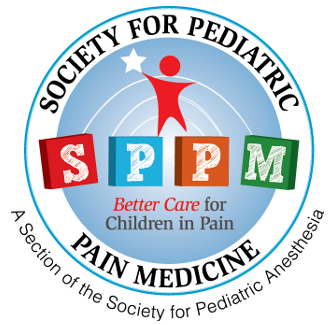Question of the Month – September 2022
{“questions”:{“12dre”:{“id”:”12dre”,”mediaType”:”image”,”answerType”:”text”,”imageCredit”:””,”image”:””,”imageId”:””,”video”:””,”imagePlaceholder”:””,”imagePlaceholderId”:””,”title”:”What pain medication is most likely to cause hemolytic anemia in normal therapeutic doses in patients with severe G6PD deficiency?”,”desc”:””,”hint”:””,”answers”:{“7xrg0”:{“id”:”7xrg0″,”image”:””,”imageId”:””,”title”:”A. Acetaminophen”},”7cful”:{“id”:”7cful”,”image”:””,”imageId”:””,”title”:”B. Ibuprofen”},”byu5t”:{“id”:”byu5t”,”image”:””,”imageId”:””,”title”:”C. Acetylsalicylic Acid (Aspirin)”,”isCorrect”:”1″},”679yx”:{“id”:”679yx”,”image”:””,”imageId”:””,”title”:”D. Oxycodone”}}}},”results”:{“n1l96”:{“id”:”n1l96″,”title”:””,”image”:””,”imageId”:””,”min”:”0″,”max”:”1″,”desc”:””,”redirect_url”:”https:\/\/pedspainmedicine.org\/wp-content\/uploads\/2022\/09\/SPPM-QOM-Posted-9-13-2022.pdf”}}}
Question of the Month – August 2022
{“questions”:{“jt83o”:{“id”:”jt83o”,”mediaType”:”image”,”answerType”:”text”,”imageCredit”:””,”image”:””,”imageId”:””,”video”:””,”imagePlaceholder”:””,”imagePlaceholderId”:””,”title”:” \r\n\r\nA 3-month-old infant is undergoing pelvic surgery and will be a candidate for regional anesthesia. What important protein is deficient in newborns and infants (as compared to older children and adults) that can contribute to toxicity if amide local anesthetics are used? \r\n”,”desc”:””,”hint”:””,”answers”:{“jqkwn”:{“id”:”jqkwn”,”image”:””,”imageId”:””,”title”:”A. Haptoglobin”},”5d0vv”:{“id”:”5d0vv”,”image”:””,”imageId”:””,”title”:”B. Alpha-1 antiglobulin”,”isCorrect”:”1″},”y2dw4″:{“id”:”y2dw4″,”image”:””,”imageId”:””,”title”:”C. Fibronectin”},”vewnc”:{“id”:”vewnc”,”image”:””,”imageId”:””,”title”:”D. Alpha-fetoprotein”}}}},”results”:{“jr6dp”:{“id”:”jr6dp”,”title”:””,”image”:””,”imageId”:””,”min”:”0″,”max”:”1″,”desc”:”Correct Answer: B. Alpha-1 antiglobulin \r\n\r\nHypoproteinemia reduces […]
Question of the Month – July 2022
{“questions”:{“bdpx0”:{“id”:”bdpx0″,”mediaType”:”image”,”answerType”:”text”,”imageCredit”:””,”image”:””,”imageId”:””,”video”:””,”imagePlaceholder”:””,”imagePlaceholderId”:””,”title”:” \r\n\r\nA 6-month-old male, otherwise healthy, presented to an ambulatory surgical center for a revision circumcision. The child underwent an uneventful inhalation induction, placement of a peripheral intravenous catheter and a secured endotracheal tube. The surgeon prepped, draped and performed a surgical time out, after which there was placement of a penile block with 0.5% […]
Question of the Month – June 2022
{“questions”:{“bijfd”:{“id”:”bijfd”,”mediaType”:”image”,”answerType”:”text”,”imageCredit”:””,”image”:””,”imageId”:””,”video”:””,”imagePlaceholder”:””,”imagePlaceholderId”:””,”title”:” \r\n\r\nA 15-year-boy presents for an urgent revision of a previous ankle dislocation after falling off his skateboard. His past history is significant for ADHD, and anxiety and ankle surgery 6 months ago. He started using marijuana when he was 13, and misused his opioid prescription after his previous surgery. He is very concerned about […]
Question of the Month – May 2022
{“questions”:{“znrhm”:{“id”:”znrhm”,”mediaType”:”image”,”answerType”:”text”,”imageCredit”:””,”image”:””,”imageId”:””,”video”:””,”imagePlaceholder”:””,”imagePlaceholderId”:””,”title”:”\r\n\r\nAuriculotherapy is a form of acupuncture that utilizes acupuncture points on the ear. Which of the following statements are true regarding auriculotherapy?\r\n\r\n“,”desc”:””,”hint”:””,”answers”:{“qk36n”:{“id”:”qk36n”,”image”:””,”imageId”:””,”title”:”a.\tIt is a modality of treatment in which the external ear is stimulated to relieve symptoms of the body.”},”tlrrl”:{“id”:”tlrrl”,”image”:””,”imageId”:””,”title”:”b.\tIt can be performed with acupuncture needles, microneedles, adhesive pellets, and laser.”},”e4e6k”:{“id”:”e4e6k”,”image”:””,”imageId”:””,”title”:”c.\tIt has been shown to […]
